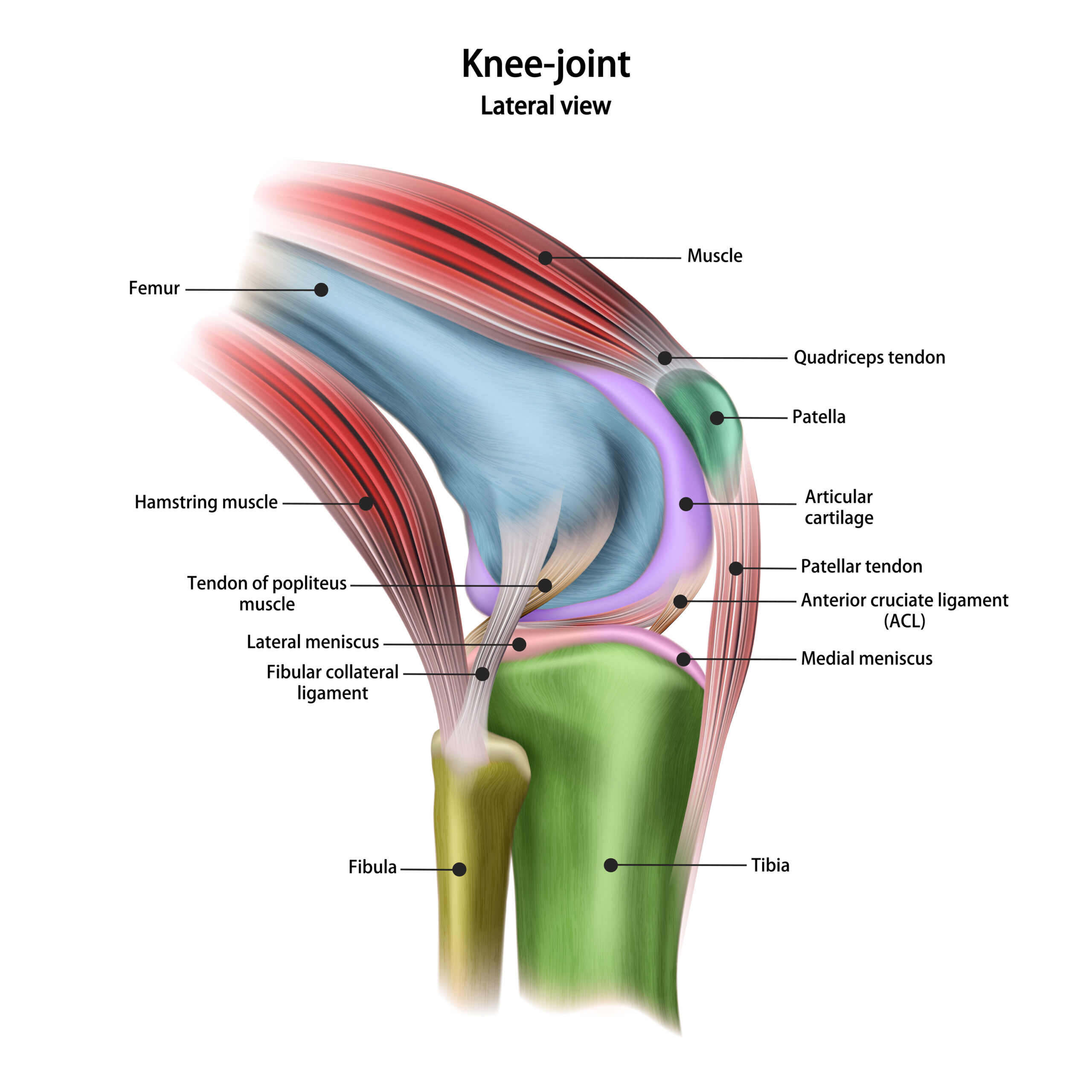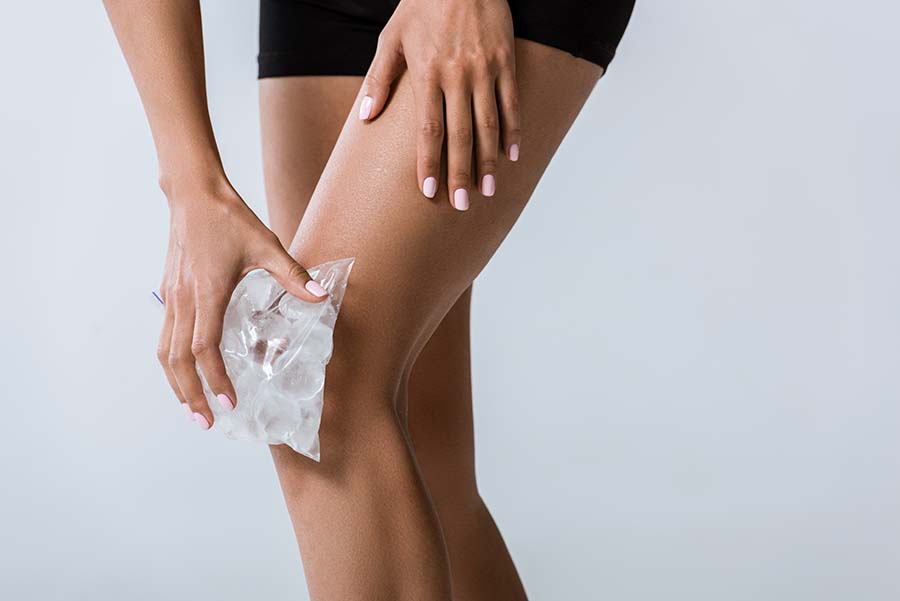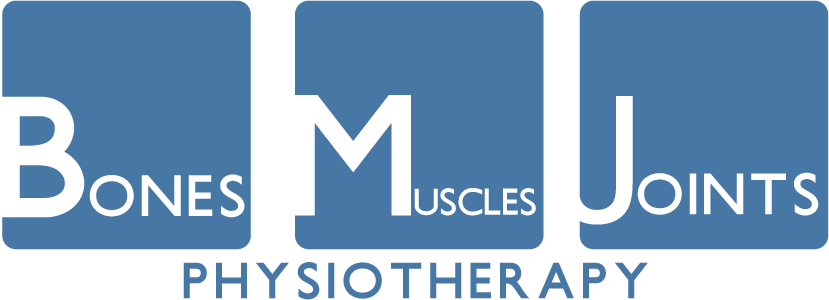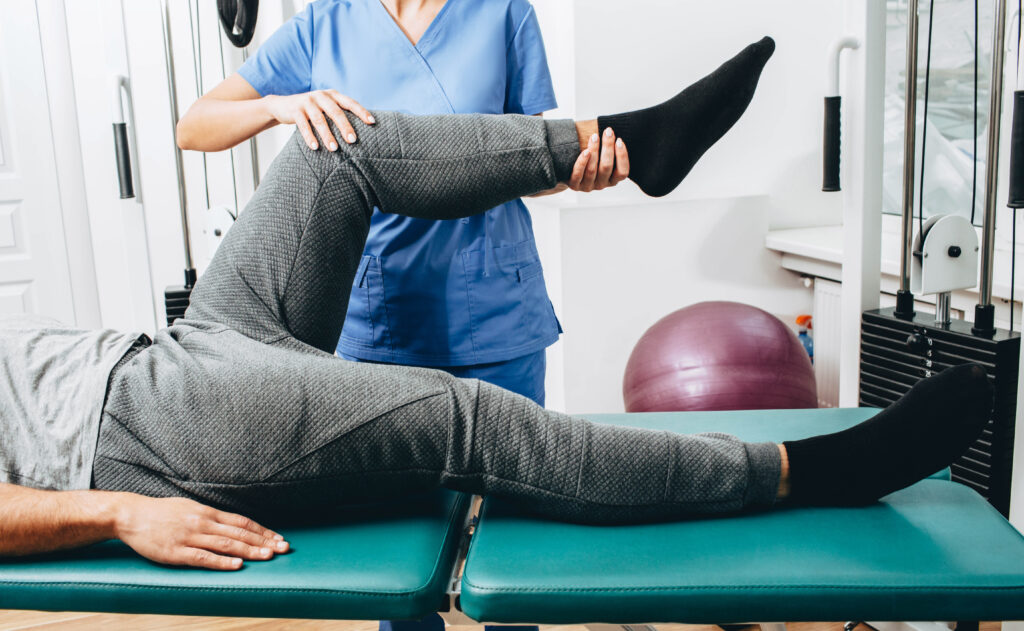Knee pain and injury are very common amongst both athletes and normal people. Typically, your body is capable of healing mild knee injuries. However, all injuries should be checked and diagnosed at the start by a physiotherapist. If knee pain persists, physiotherapy can help you recover from the injury through mobilisation techniques, stretches, taping, massage and strengthening exercises.
Before we explain further how you can remedy knee pain, we need to first understand what exactly the knee is, and the types of injuries associated with it. In this article, we will cover:
- The structure of the knee
- How the knee functions
- Common risks that lead to knee pain
- Tips to prevent knee injuries
- Symptoms that are categorised under knee pain
- First aid and immediate steps that should be taken
- Knee pain diagnosis
- Types of knee injuries
- Professional Treatments for knee pain
- How physiotherapy is used to treat knee pain
The Structure of your Knee
Your knee is a synovial hinge joint connecting the thigh bone (femur) and shin bones (tibia and fibula). It permits the flexion and extension of your lower leg relative to your thigh. In layman terms, your knee enables the bending and straightening of your leg, an essential motion that is required in everyday activities. Simply put, without your knees, you would have trouble walking, running, standing or even sitting.
The most visible component of your knee is the patella, otherwise more commonly known as the kneecap. It sits in a groove connected to the femur and is cushioned by a thick layer of cartilage. Cartilage also surrounds and supports the knee joint on either side. Additionally, ligaments, which are tough bands of connective tissue, hold the bones in place.
The anatomy of your ligaments and bones limit the range of motion of your knee to about 120 degrees of flexion. In addition, the knee is capable of a small degree of lateral and medial rotation when flexed.

How your Knee Functions
Your knee functions based on the contraction of muscles that surround it. When the muscles at the front of your thigh (quadriceps) contracts, your leg straightens. Conversely, when the muscles on the back of the thigh (hamstrings) contract, your leg bends.
The quadriceps and hamstrings work in tandem to allow you to perform any motion that you require your knee to undergo. For most, it is an instinctive process that we spare little thought for.
Common Risks Associated with Knee Injuries
Knee injuries are more prevalent in certain situations. These include:
- Being overweight
- Having weak or tight lower and upper leg muscles
- Playing high impact sports
- Playing sports that rely on knee cushioning impact
- Having previously injured your knees
If you find that these situations apply to you, then you should certainly take active care of your knees.
Tips for Preventing Knee Injuries

If the situations listed above apply to you, then you need to take active care of your knees. We have listed several easy tips to follow:
- Always perform proper warm up of your joints and muscles. This can be done by gently going through the common motions of your sport.
- Wear appropriate footwear and use proper gear
- Avoid abrupt jarring motions
- Perform proper cool down after your sport session by doing light stretches
- Perform incremental increases in physical exertion.
Symptoms of Knee Injuries
Other than knee pain that you are experiencing, you may also observe other symptoms of knee injuries:
- Swelling of your knee
- Increasing redness on the surface
- Heat being trapped in the knee
- Your knee “giving way” or “buckling” when you attempt to put weight on it
- Locking, popping, snapping or clicking sounds when the knee is in motion
- Inability to straighten or bend your knee
- Obvious deformity
First Aid for Knee Injuries

If you are experiencing knee pain, you should apply first aid for the first 48 to 72 hours. This will prevent aggregation of the injury and possibly help to relief some of the pain.
- Stop performing your sport or activity immediately. Do not try to work through or ignore the pain. Instead, rest your knee joint first.
- Apply ice packs to reduce pain, swelling and any internal bleeding. Application can be done for 15 minutes every few hours.
- Bandage the knee to reduce mobility and to provide support for it
- Elevate the injured leg
- Avoid massaging the knee
- Avoid applying heat to the knee
You should also seek the professional opinion of a doctor or physiotherapist regardless of whether the pain remains or subsides.
Knee Pain Diagnosis
When you visit a physiotherapist or a doctor for the first time for your knee pain, they may perform the following tests:
- Subjective assessment to find out when you first started feeling pain
- Functional movement testing like walking/ stairs/ squatting
- Blood tests (Performed by Doctors only)
- Imaging – X-ray, ultrasound or MRI scans (Performed by Doctors only)
- Knee joint aspirate – a small amount of fluid is drawn from your knee using a needle (Performed by Doctors only)
Based on these tests, the doctor or physiotherapist will be able to diagnose your injury.
Types of Knee Injuries
There are several different types of knee injuries. The most common of which are (1) ligament sprains, (2) tendon tears, (3) cartilage tears and (4) patella-femoral pain syndrome.
Ligament Sprains
Ligament sprains occur when they are stretched beyond their capacity. Common causes of this type of knee injury are sudden twists of your knee, exertion of excessive force, heavy landings and rapid halting when sprinting.
Torn ligaments lead to internal bleeding, swelling, pain and numbness or laxity in the knee. Of all ligaments in the knee joint, the anterior cruciate ligament (ACL) is mostly commonly injured. Unfortunately, your body is incapable of performing self-repair for a ruptured ACL, and thus requires reconstructive surgery.
Tendon Tears
Tendons anchor your muscles to your knee joint. When overstretched, they will tear and bleed. A sudden onset of pain is to be expected, making walking difficult while buckling of knees will occur frequently. Fortunately, most tears can be healed without surgery. Instead, rest coupled with subsequent physiotherapy is enough.
Cartilage Tears
The most common form of cartilage injuries is a torn meniscus. Typically occurring during weight bearing exercises, the cartilage tears due to severe impact or twisting. Subsequent symptoms include swelling, pain and the inability for you to straighten your injured leg. Furthermore, this type of injury is more common amongst older people due to the wear and tear that their legs have accumulated up to this point in their lives.
Patello-femoral Pain Syndrome
Characterised by pain felt behind your knee cap, the patella-femoral pain syndrome is caused by any repeated abnormal movement of the knee when it is bent or straighten. As such, you can expect the pain to come gradually over time.
Additional contributing factors to this injury include:
- Squatting for long periods
- Walking up and down stairs or hills
- Staying still for extended periods of time
- Imbalances in muscle strength
- Tight muscles
- Structural abnormalities
Professional Treatments for Knee Pain
Depending on the exact injury, different types of professional treatments may be recommended for your knee pain. This typically includes:
- Physiotherapy – pain reduction techniques, taping, exercises and rehabilitation methods
- Aspiration – drawing of fluid from the knee with a fine needle in order to reduce the amount of swelling
- Arthroscopic surgery – performed by inserting slender instruments through small incisions. Commonly used to treat cartilage
- Open surgery – performed when injuries are severe or if the entire joint needs repair
How Physiotherapy Treats Knee Pain

Different physiotherapy techniques are used to treat knee pain depending on the type of injury sustained.
Sprained Ligaments
For sprained ligaments and tendon tears, physiotherapy can be done once the knee’s swelling and pain has subsided. A series of physical exercises will aid you to build up your strength bit by bit without risk of re-tearing the ligament.
Physiotherapy can aid rehabilitation for ACL injuries. For Acute ACL injuries, pain management and gait correction can be performed. As for pre and post-surgery, the following steps will be followed:
- Pain and swelling management
- Walking aids
- Knee movement and muscles control with electrical stimulation kits
- Eventual return to daily and sporting activities through muscle strengthening routines
Cartilage Tears
For cartilage tears, once surgery has been performed to restore the damaged cartilage, physiotherapy can be conducted to stimulate restorative healing.
If the injury is grade 1 – 2, physiotherapy would include treatments that:
- Release tight and overused muscles
- Correction of gait or posture
- Activation and strengthening of lower limb muscles
The expected time duration for pain relief is about 6 weeks.
If the injury is grade 3 – 4, physiotherapy is aim at pain relief and management:
- Corrective bracing
- Kinesiology taping
- Footwear correction
Trust BMJ to Treat Your Knee Pain
BMJ Therapy is a team of Allied-Health Professionals (Physiotherapists, Occupational therapists) and Massage Therapists with special interests in treating injuries involving our Bones, Muscles and Joints (called musculoskeletal injury). BMJ Therapists have vast clinical experience and base our Physiotherapy Singapore treatment on the latest medical knowledge to deliver the best possible care to our clients.
Contact us today to find out about our knee physiotherapy Singapore service today.


